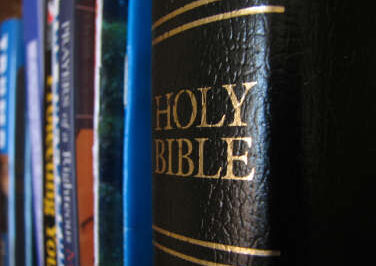
However, an event in 1948 helped settle the controversy of the authenticity of the 1611 translation of the English Scriptures as it relates to the Old Testament.
In 1947, a Bedouin shepherd boy was watching goats in the Judean wilderness near the western edge of the Dead Sea. Exploring several caves, he discovered a group of large clay jars. Inside were pieces of rolled, leather-like parchments. In 1948, the Bedouin sold seven parchments to Mr. Kando, a cobbler and antiquities dealer from Bethlehem, who eventually sold the scrolls. The most famous of the scrolls, it was discovered, was an ancient copy of the Book of Isaiah.
This valuable scroll was examined by scholars and purchased by the Hebrew University, who placed it on display at the Shrine of the Book Museum in Jerusalem. The scroll begins with the 16th chapter of Isaiah and continues through Isaiah 66. To the amazement of scholars, when this 2,000-year-old scroll was compared to the English translation of Isaiah from the 1611 King James translation of the Bible, they were both parallel, with the only exceptions being a few minor spelling differences and tense-oriented scribal errors.
This discovery was good news to believers in the inspiration of the Bible and sad news to skeptics of divine inspiration.
Some Western Hebrew scholars occasionally point out that there are misspelled words in certain sections of the Old Testament. These are usually identified as mistakes by the copyist. Thus the inspiration of the Scriptures is minimized by alleged human mistakes. The Jewish rabbis, however, have discovered that these so-called mistakes actually reveal a deeper meaning or a cryptic prophetic secret, indicating future events.
Mysteries of the Mistakes
When studying the Scriptures, Christian ministers often employ one of these methods to interpret or prepare a message:
The primary meaning—reading the story as a past or
future event
The practical meaning—how the story or verse can be personally applied to us today
The prophetic meaning—how the prophetic symbols and layers reveal mysteries of the future
Jewish rabbis are taught to analyze the Torah by using four different methods. They are:
Peshat—understanding the simple meaning of the text
Remez—an allusion, or an allegorical and philosophical level of study
Drash—the regal level, the Bible is understood using riddles and parables
Sod—the hidden meaning or the mystical level 17
Christ was a master at teaching on all four levels. He taught the simple and practical life truths through the Beatitudes, yet He also revealed the riddles using parables and privately revealed the mysteries of the kingdom to His disciples (Matt. 13:11).








Leave a Comment
You must be logged in to post a comment.